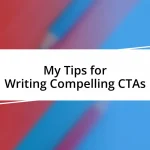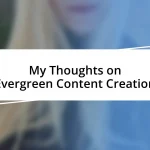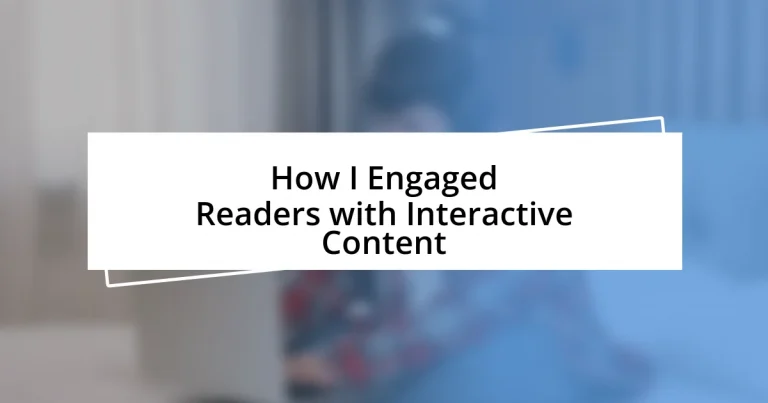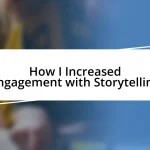Key takeaways:
- Interactive content fosters deeper user engagement by encouraging active participation rather than passive consumption, creating communities united by shared experiences.
- Effective engagement strategies, such as polls and quizzes, can boost content visibility, user retention, and foster personal connections, encouraging organic sharing among readers.
- Utilizing tools like Typeform and Canva, along with visual elements and community-building practices, enhances content interactivity and reader involvement, leading to more meaningful connections.
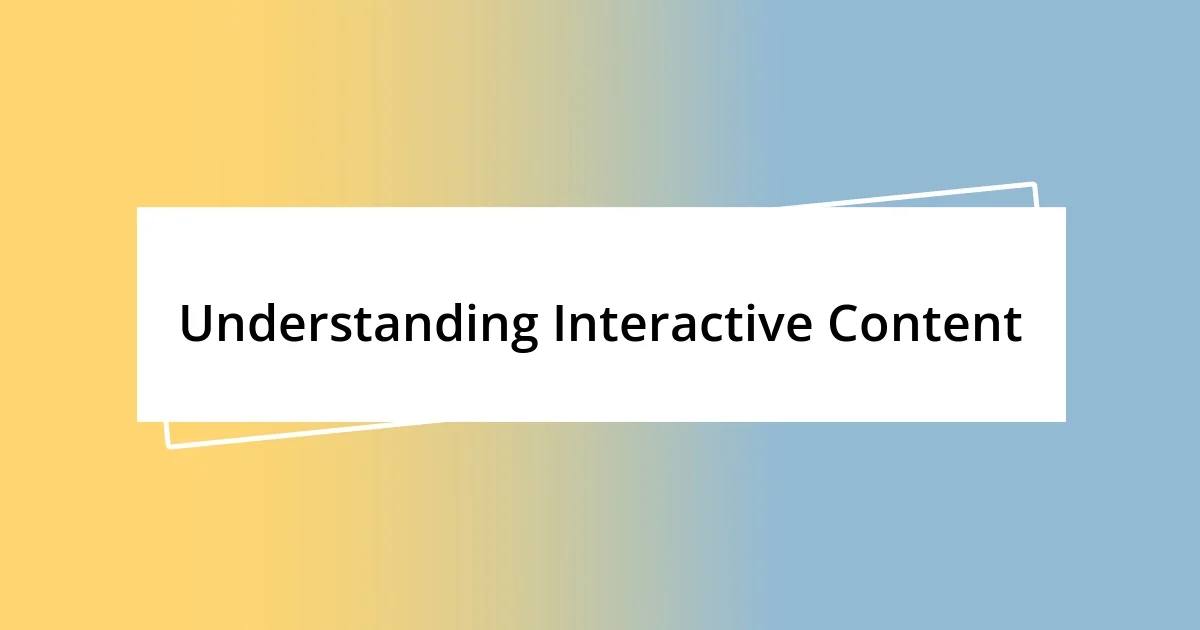
Understanding Interactive Content
Interactive content isn’t just a trend; it’s a powerful way to engage users on a deeper level. I remember the first time I stumbled upon a beautifully designed quiz that not only tested my knowledge but also revealed insightful information about my preferences. It was like having a conversation with the creator, who understood my interests and tailored the experience just for me.
When I think about interactive content, I see it as a bridge between the creator and the audience. I’ve often wondered, what makes certain interactive elements irresistible? For me, it’s the ability to participate rather than passively consume. Engaging formats like polls, interactive infographics, or even gamified experiences encourage users to invest their time and thoughts, creating a sense of ownership over the content.
There’s something magical about being part of the narrative, isn’t there? Interactive content transforms the traditional consumption model, where readers simply absorb information. Instead, it invites them to contribute, share their thoughts, and even challenge the status quo. Reflecting on my experiences, I can confidently say that this active participation fosters a community of like-minded individuals, united by shared interests and experiences.
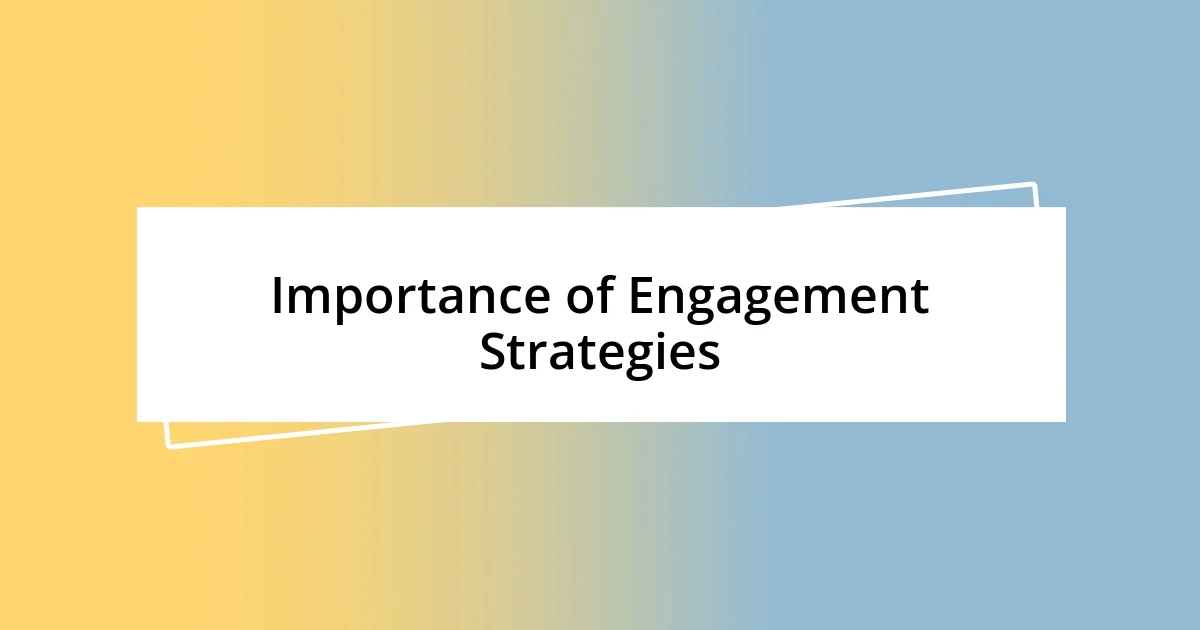
Importance of Engagement Strategies
Engagement strategies are crucial as they transform static content into interactive experiences that resonate with users. I recall a time when I implemented a simple feedback poll at the end of my article; the results surprised me. Not only did it provide valuable insights into my readers’ preferences, but it also fostered a dialogue that made them feel heard and appreciated.
Moreover, I’ve noticed that when content is interactive, it tends to create a personal connection. For instance, after incorporating an interactive infographic into my blog, I found readers not only spent more time on the page but also shared the content with friends. This kind of organic sharing is priceless, as it highlights the importance of engagement strategies to foster community and relationship-building.
Ultimately, the right engagement strategy can significantly boost content visibility and user retention. I often compare successful strategies to a good dinner party—when guests are actively involved in the conversation, the atmosphere becomes more lively. In the same way, engaged readers are more likely to return for more, enhancing loyalty and ongoing interaction with the content.
| Engagement Strategy | Impact |
|---|---|
| Interactive Polls | Encourage user feedback and participation. |
| Quizzes | Provide personalized insights based on user responses. |
| Gamified Content | Enhances engagement through fun and competitive elements. |
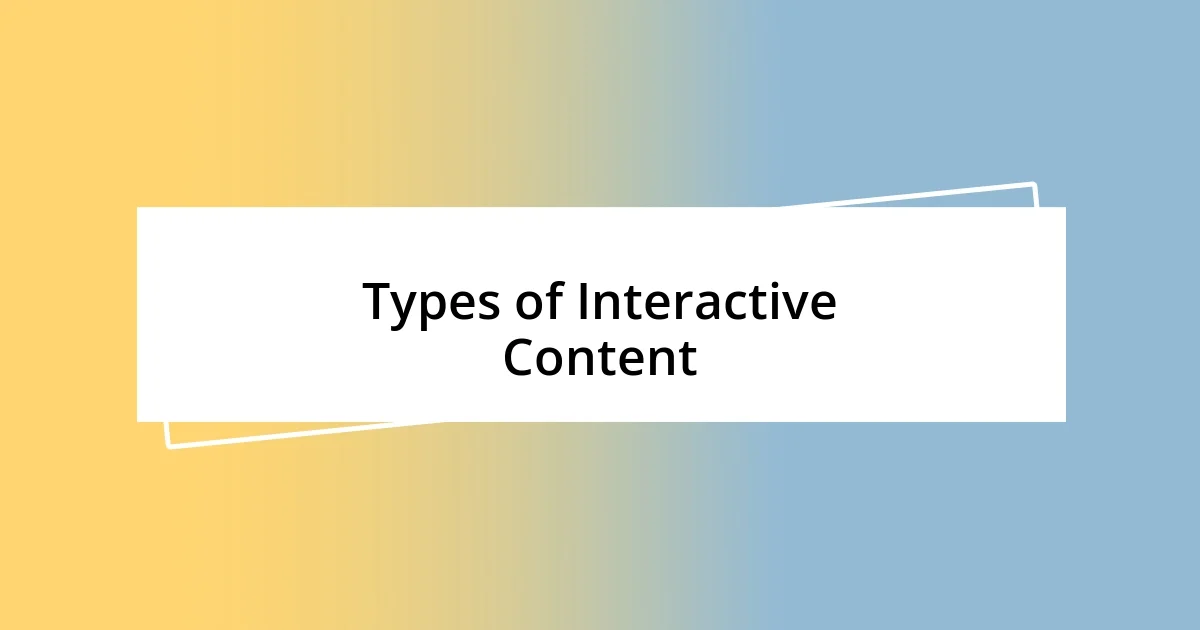
Types of Interactive Content
Interactive content comes in various forms, each designed to captivate and engage users in unique ways. I vividly recall a time when I encountered a minigame integrated into a blog post. It wasn’t just entertainment; it challenged my skills and took me deeper into a topic I thought I knew. That blend of fun and learning kept me glued to the screen, embodying the essence of interactive content.
Here are some common types of interactive content that I find particularly effective:
- Quizzes: These are not only fun but can yield personalized results, creating a memorable experience.
- Interactive Infographics: They allow readers to explore data at their own pace, making complex information digestible.
- Polls and Surveys: I love how these tools foster immediate feedback, giving readers a voice and a stake in the conversation.
- Calculators: They provide tailored insights based on user input, effectively guiding decision-making processes.
- Contests and Games: These elements introduce an element of excitement, turning the learning experience into a competitive challenge.
Each type offers a unique opportunity for connection, which is what I truly cherish in interactive content.
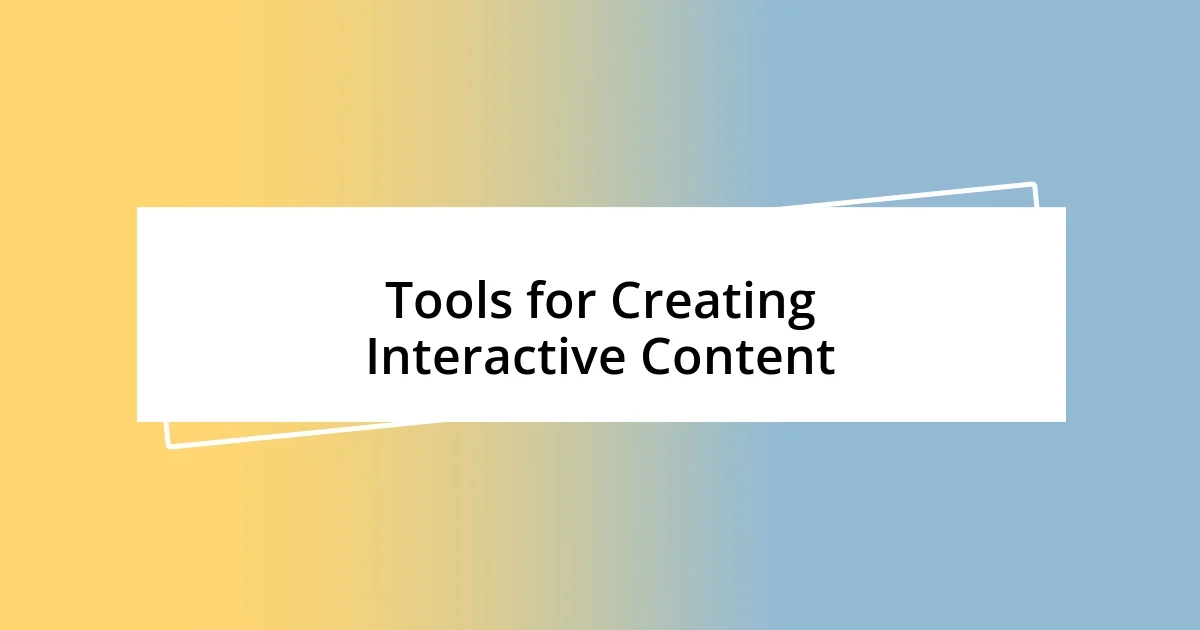
Tools for Creating Interactive Content
Creating engaging interactive content doesn’t have to be daunting when you use the right tools. For instance, I’ve had great success with tools like Typeform for surveys and quizzes. They offer a visually appealing interface that makes it easy for readers to provide feedback—it’s like inviting them to a conversation right at their fingertips!
I also love incorporating Canva’s design features for creating interactive infographics. In one instance, I transformed a complex dataset into an interactive chart, and I was amazed at how readers immersed themselves in the material. They commented on the design and insights, making me realize how powerful visual interactivity can be in enhancing user engagement.
Lastly, I can’t overlook the impact of platforms like Playbuzz for gamified content. I remember launching a trivia quiz related to my latest blog post, and the excitement it generated was palpable. Readers not only participated but also shared their scores on social media, doubling down on that engagement. Have you considered how some playful competition can drive interaction and draw your audience back for more?
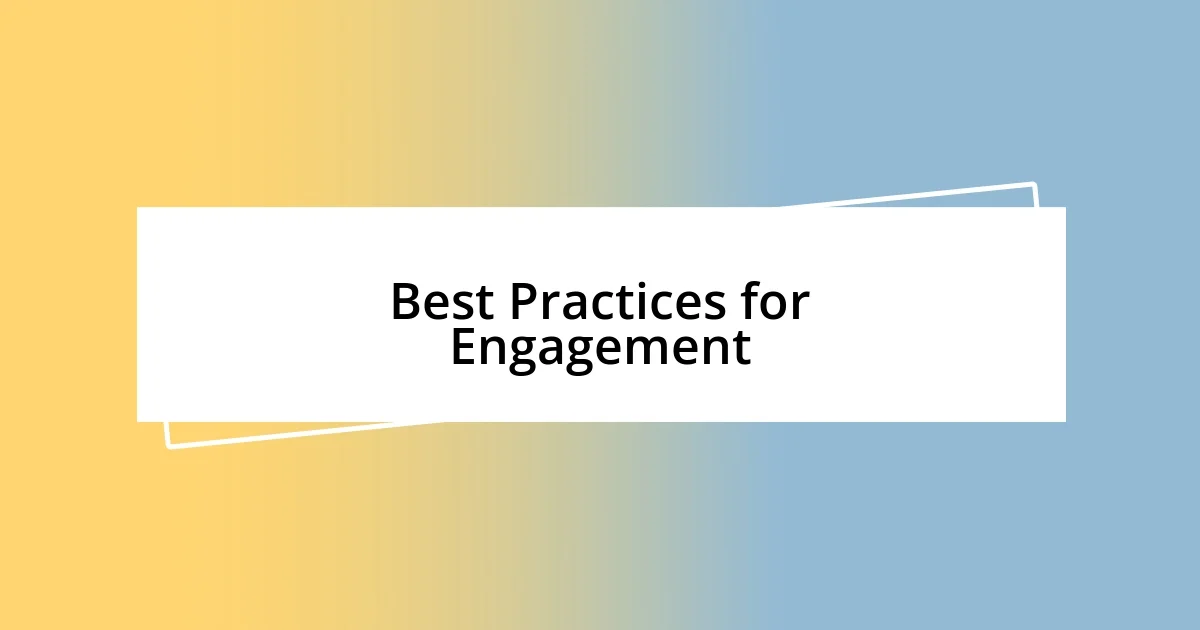
Best Practices for Engagement
Engagement is all about understanding your audience’s needs and interests. In my experience, personalizing content can elevate engagement significantly. I once created a quiz that tailored results based on user responses. The excitement in the comments section was electric as people shared their results and engaged in discussions about their outcomes. Isn’t it fascinating how a simple quiz can spark conversations that keep readers coming back?
Incorporating visual elements is another best practice that I swear by. I remember using an interactive infographic in a post that illustrated a complex process. Readers seemed drawn to click through different parts, and their feedback indicated they felt more engaged. This visual layer not only made the information easier to digest but transformed the content into a captivating journey. Are you leveraging visuals to entice your readers?
Lastly, I find that fostering community is crucial. When I launched a poll to gather opinions on a recent trend, it turned into a lively discussion forum. Readers appreciated having their voices heard, and many returned to see how others voted. This sense of involvement not only increased engagement but also built a loyal community. Don’t you think creating that community connection enriches the overall content experience?
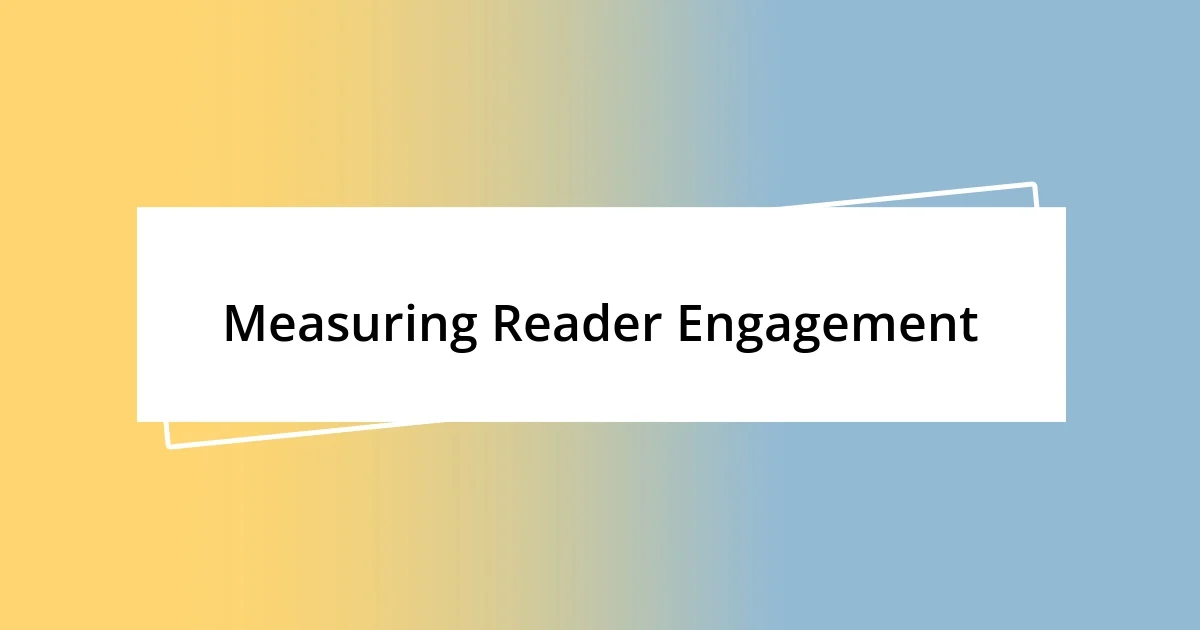
Measuring Reader Engagement
When it comes to measuring reader engagement, I often rely on analytics tools like Google Analytics and social media insights. These platforms have helped me understand which content resonates the most with my audience. For instance, after experimenting with interactive polls, I noticed a significant uptick in page views and shares. Isn’t it rewarding to see numbers that reflect genuine interest?
Feedback is another crucial element in gauging engagement. I remember putting out a survey after a particularly interactive piece, asking readers what they loved or wanted more of. The responses were eye-opening! Readers expressed how certain features made them feel more connected, leading me to prioritize those elements in future content. How can we ensure we’re listening to our audience’s voices?
Lastly, monitoring comments and interactions on my content gives me immediate insight into reader engagement. I find it revealing when readers share personal stories or ask follow-up questions; it shows they’re invested in what I have to say. One time, a reader shared their experience related to a quiz I created, sparking an entire thread of conversation. Isn’t it fascinating how those moments deepen the connection between content creator and audience?



